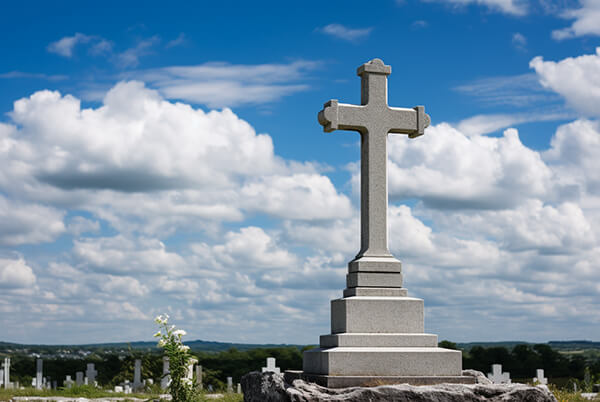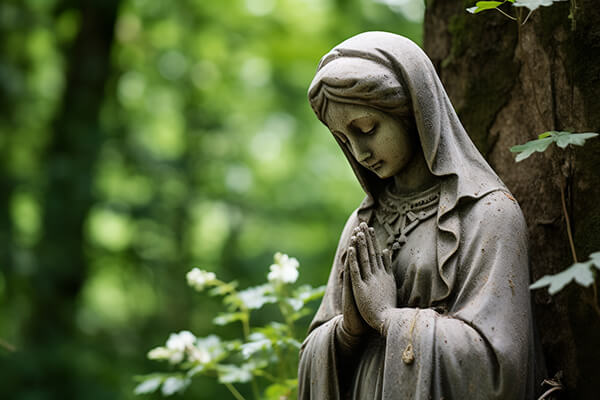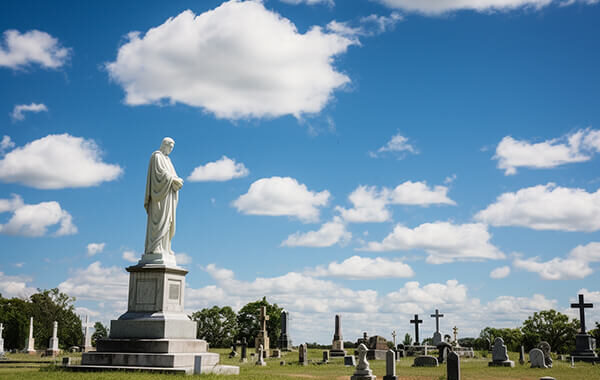When it comes to honoring and remembering the departed, various religious traditions have specific guidelines and customs. In the Catholic faith, the rules for headstones play a crucial role in preserving the sanctity of burial grounds and expressing the enduring connection between the living and the deceased. This article will delve into the Catholic rules for headstones, exploring the significance, symbolism, and regulations associated with memorializing loved ones in accordance with Catholic teachings.
-
Catholic Cemetery Regulations:
Catholic cemeteries are consecrated grounds considered sacred and reserved for the burial of the faithful. To maintain the sacred nature of these burial sites, certain regulations govern the placement and design of headstones. These regulations aim to uphold the dignity of the deceased and create a respectful and uniform appearance within the cemetery.
-
Symbolism and Meaning:
Catholic headstones often feature religious symbols and inscriptions that reflect the deceased’s faith and devotion. Common symbols include the cross, an anchor, a dove, or an image of a saint. Inscriptions may include prayers, biblical verses, or personal sentiments that convey the hope of resurrection and eternal life.

-
Material and Design:
Catholic rules for headstones often specify the materials that can be used and the design elements allowed. Traditional materials include granite, marble, or bronze, chosen for their durability and timeless appearance. Simple and dignified designs are preferred, avoiding excessive ornamentation that might distract from the spiritual significance of the memorial.
-
Size and Shape:
While there may be variations among different dioceses or cemeteries, Catholic guidelines typically prescribe specific size restrictions for headstones. This helps maintain a sense of order and uniformity in the cemetery while preventing ostentatious displays. Common shapes include upright monuments or flat markers, with variations based on local regulations.
-
Inscriptions and Epitaphs:
Inscriptions on Catholic headstones are expected to be respectful, reflecting the deceased’s life and faith. Common choices include excerpts from the Bible, prayers such as the Lord’s Prayer, or personalized epitaphs that celebrate the individual’s virtues and contributions. It is important to avoid inscriptions that contradict Catholic teachings or convey messages inconsistent with Christian values.
-
Prayers for the Deceased:
Catholicism places a strong emphasis on praying for the deceased, and headstones often include requests for prayers or references to specific prayers, such as the Requiem Mass. These reminders encourage the living to continue offering prayers for the souls of the departed, fostering a sense of spiritual connection between the living and the deceased.

-
Maintaining the Gravesite:
Another aspect of Catholic rules for headstones involves the ongoing care of the gravesite. Families are generally responsible for maintaining the headstone and the surrounding area. This care reflects the Catholic belief in the dignity of the body and the importance of showing respect for the resting place of the deceased.
In conclusion, Catholic rules for headstones are rooted in the traditions and teachings of the Church, emphasizing the sacredness of burial grounds and the enduring connection between the living and the departed. Adhering to these guidelines ensures that the final resting places of the faithful reflect the values of the Catholic faith while providing solace and a sense of continuity for grieving families.
Similar articles:
What are the parts of a monument?
How are military graves marked?
Why is granite good for monuments?

